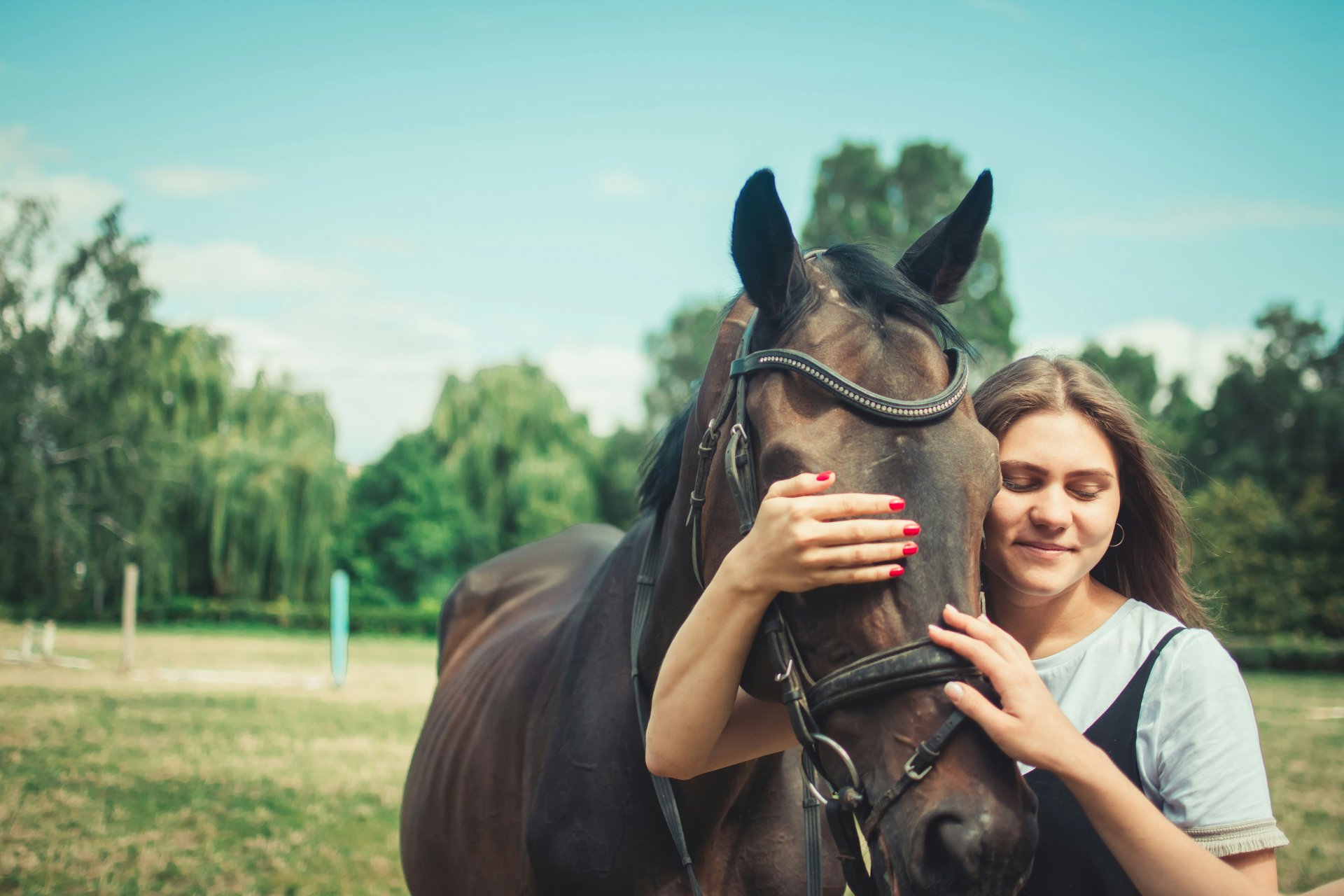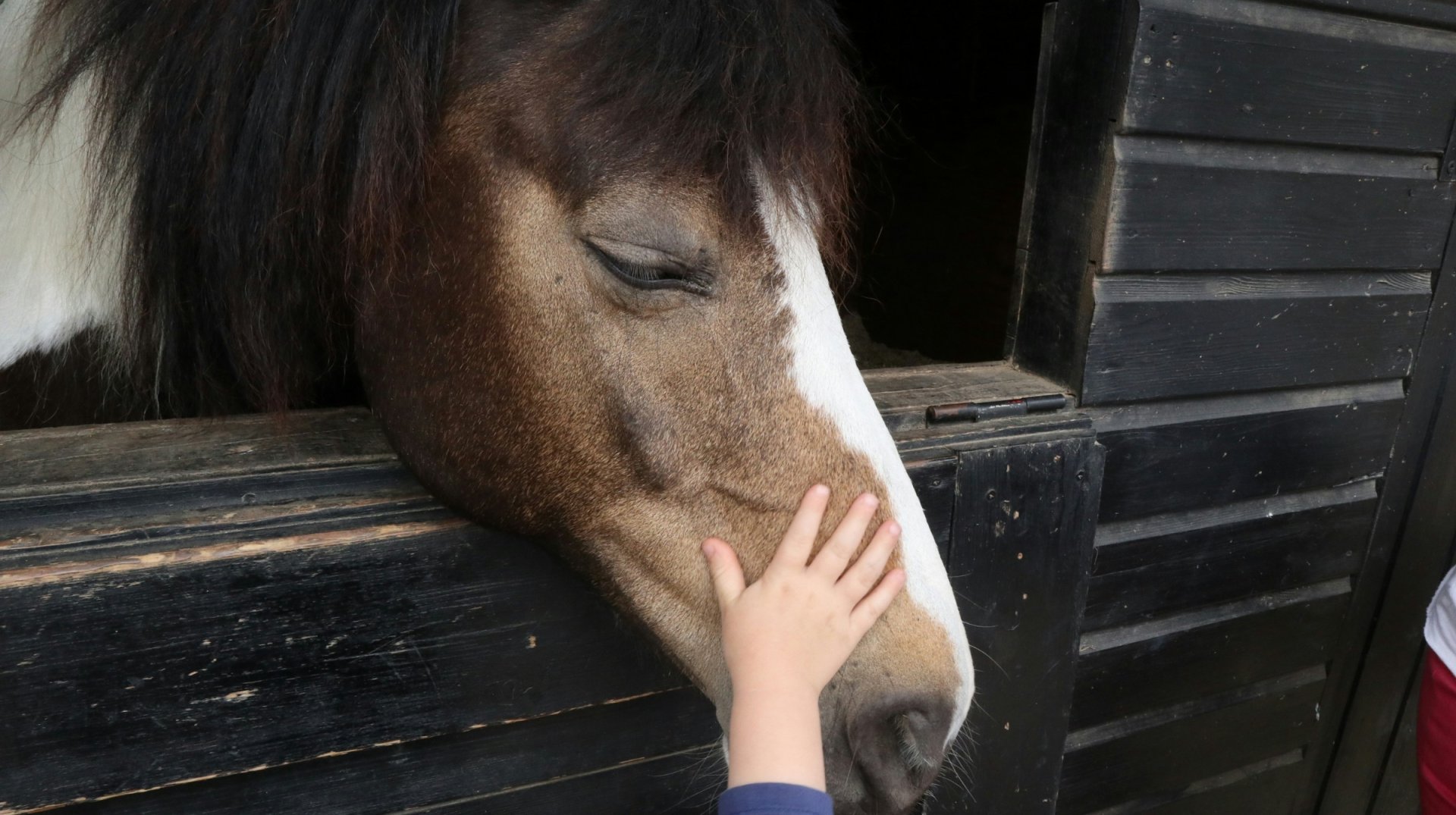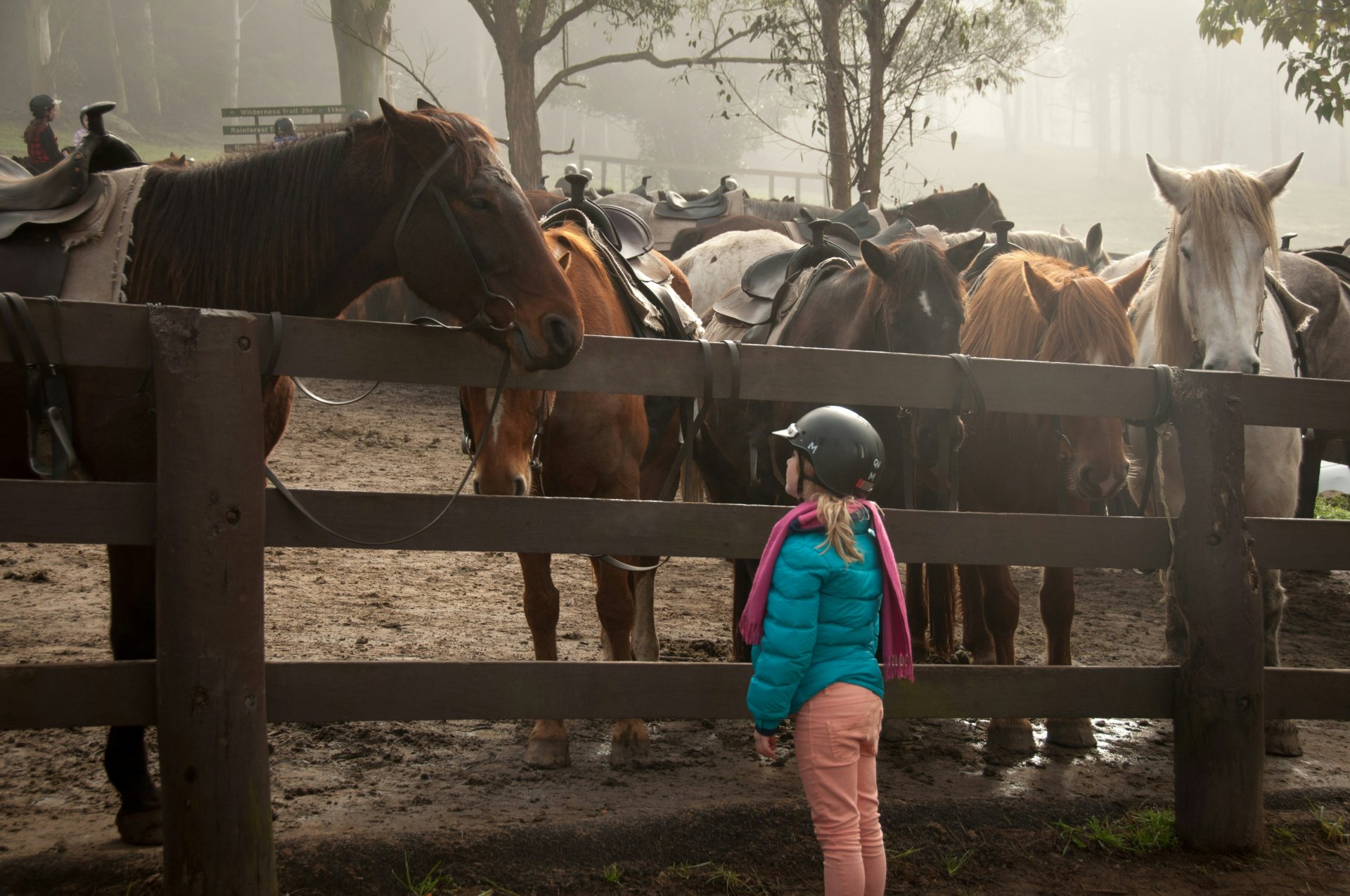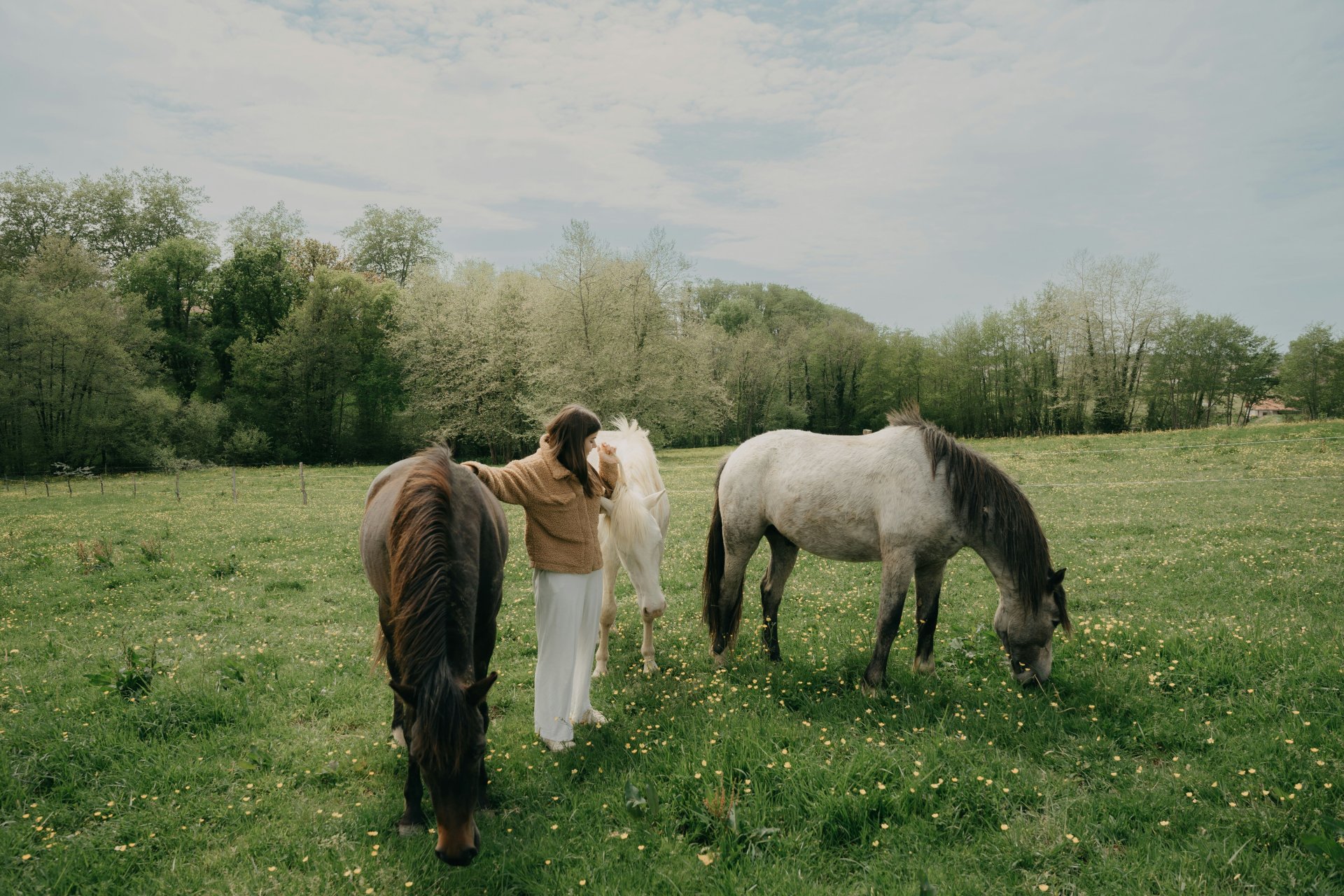
For too long, horse training was viewed through a purely mechanical lens: apply pressure, release pressure, reward the desired behavior. But science and centuries of partnership have shown us that horses are not simple machines. They are deeply emotional, socially complex beings whose performance, trust, and willingness are directly dictated by their emotional state. Understanding these reactions is not "soft" horsemanship; it is the smartest, most effective, and most ethical path to training a confident, resilient, and happy athlete.
In this article, we'll delve into the emotional world of the horse. We'll explore how they perceive us, how they communicate their feelings, and how you, as a rider and trainer, can shape these emotional responses to build a partnership that transcends command and control.
The Herd Instinct: The Blueprint for the Human-Horse Bond
To understand the equine emotional response, we must first look to the wild. Horses are prey animals whose survival for millions of years has depended on the herd. This instinct is hardwired into their very being and forms the foundation of how they relate to us.
1. The Search for a Leader: In the herd, there is a clear hierarchy. Horses find security in knowing who is the confident, consistent leader. In a training context, you must become that leader. A horse without a clear, trustworthy leader is anxious, insecure, and prone to spooking or making independent—and often dangerous—decisions.
2. The Need for Security: A horse's primary emotional driver is the search for safety. Any threat—real or perceived—triggers their flight response. Your role is to become their safe harbor. When a horse looks to you for guidance in a scary situation and finds calm assurance instead of alarm, you build immense trust. This is the cornerstone of the emotional bond.
3. The Language of the Unspoken: Herd communication is subtle. It's in the flick of an ear, the tension in a flank, the posture of the neck. They are masters of reading body language. They are also reading yours with an accuracy that can be humbling. Your emotional state—your tension, your frustration, your calm—is directly transmitted to your horse through your seat, your hands, and your energy.

Decoding the Emotional Spectrum: From Fear to Trust
Horses experience a rich tapestry of emotions. Let's break down the key ones you'll encounter in training and what they mean.
1. Fear and Anxiety: The Prey Animal's Default
This is the most powerful and primal emotion. It's not disobedience; it's a survival mechanism.
● Signs: Wide, white eyes, head held high, tense muscles, snorting, fidgeting, spooking, bolting, or freezing.
● The Trainer's Response: Patience and Reassurance. Never punish fear. It will only confirm the horse's belief that the situation was dangerous. Instead, lower your energy. Speak in a low, calm voice. Allow the horse to look at the scary object from a distance. Use rhythmic, repetitive exercises like circles or yielding the hindquarters to help them focus and calm their nervous system. The goal is to show them, through consistent experience, that you are not a source of danger but a source of safety.
2. Trust and Contentment: The Foundation of Willing Partnership
This is the emotion we strive to cultivate. A trusting horse is a willing partner, not a compliant slave.
● Signs: A soft, relaxed eye, lowered head, licking and chewing, a deep sigh, a relaxed and swinging back, ears flicking softly back and forth between the rider and the direction of travel.
● The Trainer's Response: Consistency and Release. Trust is built in a thousand small moments. Be consistent in your aids and your expectations. Most importantly, the instant the horse tries to give you what you ask for, release the pressure. This release is the most powerful reward you can give. It tells the horse, "Yes, that is what I wanted. You have understood me." This positive reinforcement builds a horse that actively seeks the right answer, creating an engaged and thinking partner.

3. Frustration and Confusion: The Breakdown of Communication
When a horse doesn't understand what is being asked, or when the pressure is never released, frustration sets in. This is often mistaken for stubbornness.
● Signs: Tail swishing (not at flies), pinned ears, bracing against the bit, tossing the head, stomping a foot, rushing or anticipating movements.
● The Trainer's Response: Clarity and a Step Back. Frustration is a clear signal that your communication has broken down. Don't escalate the pressure. Instead, break the exercise down into smaller, more manageable steps. Go back to something the horse knows well to rebuild confidence. Ensure your aids are clear and distinct. Ask yourself, "Is my request fair and understandable?" Often, the problem lies with the trainer's unclear signaling, not the horse's unwillingness.
4. Respect and Regard: The Willingness to Follow
This is different from trust. Respect is the horse's acknowledgment of you as a competent leader. It's the understanding that your space and your guidance are to be honored.
● Signs: Moving willingly off your pressure, yielding their hindquarters or forequarters softly, standing quietly tied and for grooming, maintaining a respectful personal space.
● The Trainer's Response: Fairness and Firmness. Establish and maintain clear boundaries on the ground. This respect on the ground translates directly to respect under saddle. Be firm in your requests but always fair. A horse that respects you sees you as a leader worth following, which is crucial for safety and advanced training.

Practical Strategies for Cultivating a Positive Emotional Response
Understanding the theory is one thing; applying it is another. Here are actionable strategies to ensure your training nurtures the right emotions.
1. Start on the Ground. The relationship is built long before you mount up. Spend time grooming, doing groundwork, and simply being with your horse. Use this time to practice yielding to pressure, moving feet, and establishing yourself as a calm, confident presence. This is where trust and respect are born.
2. Master the Art of Timing. The equine brain connects cause and effect in a very short window. Your release or reward must be instantaneous for the horse to understand which action caused it. A poorly timed release can reward the wrong behavior and create confusion.
3. Read the "Try." Celebrate the smallest effort. When a horse even thinks about trying to do what you asked—a slight weight shift, a minor softening—release and reward. Acknowledging the "try" encourages the horse to keep trying, building a proactive and confident animal.
4. End on a Good Note. Training sessions should not always be about pushing for the next big milestone. Always end with a successful completion of a simple task that the horse understands. This leaves the horse feeling confident and successful, eager for the next session. A frustrated quit will leave a lasting negative impression.
5. Your Tack as a Communication Tool, Not a Weapon. This is where our expertise at Grassland Saddlery truly aligns with this philosophy. Your equipment should be an extension of your gentle, clear communication. A well-fitted saddle allows for freedom of movement and prevents pain-induced behavioral issues. A thoughtfully designed bit works with the horse's anatomy to provide clear signals without causing discomfort or fear. Ill-fitting or harsh equipment will always trigger negative emotional responses like pain, anxiety, and resistance. Investing in high-quality, anatomically correct tack is a direct investment in your horse's emotional well-being and your training success.
Conclusion: A Partnership Forged in Emotion
Training a horse is not about domination; it's about education and partnership. By shifting your focus from "what" the horse is doing to "why" the horse is doing it, you unlock a new level of horsemanship. You begin to speak a language older than words, a language of feel, timing, and empathy.
When you prioritize your horse's emotional responses, you are not just creating a better-trained horse; you are cultivating a willing partner who trusts you, respects you, and gives you their heart. And at Grassland Saddlery, we believe that is the ultimate goal of every true equestrian. It’s the reason we pour our passion into crafting equipment that supports this beautiful, emotional journey—because the best rides are always built on a foundation of trust.